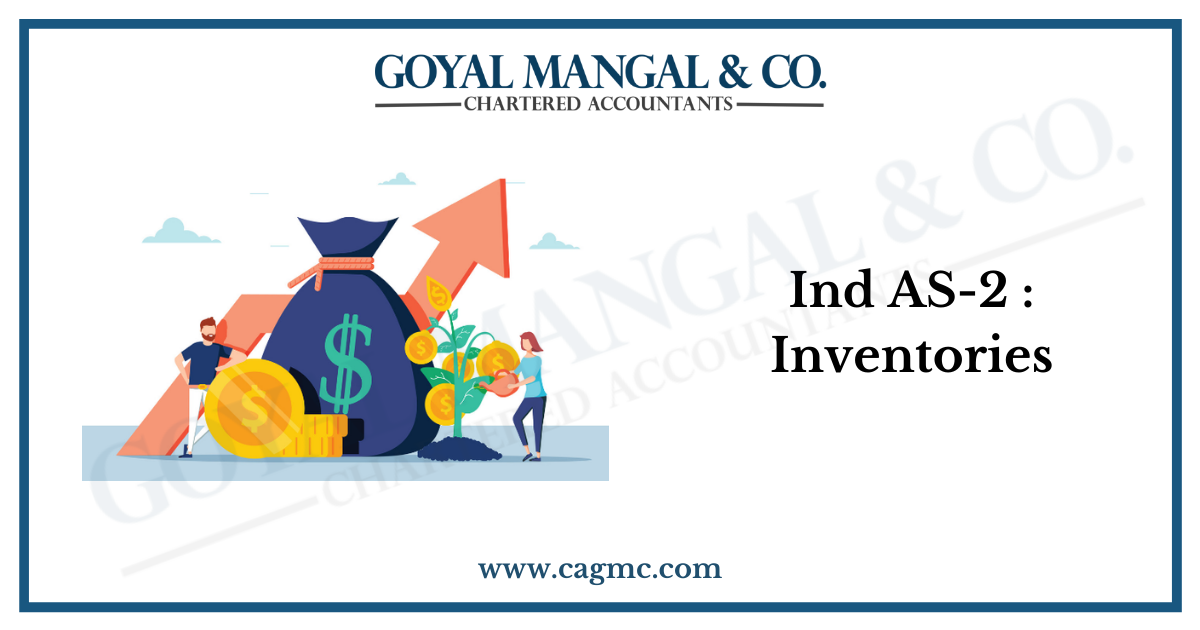| Table of Content |
Meaning of Inventories
As per Ind AS-2, Inventory means the goods available for sale, raw materials, and goods used for producing goods available for sale. Inventory represents one of the most important current assets of a business so it is very important to measure it correctly.

Exclusion of inventory
- Financial instruments.
- Biological assets such as animal and plants used for agricultural activities.
- Agricultural and forest products, agricultural produce after harvest, and minerals and mineral products that are measured at net realisable value.
- Commodity trades which are conducted by brokers that are measured at fair value less costs to sell.
Measurement of Inventories
Inventories shall be measured at cost or NRV whichever is lower
Cost comprise: cost of inventory includes cost of purchase, cost of conversion and other costs incurred in bringing the inventories into its present location and condition.
Costs exclude:
- Abnormal amount of wasted material, labour or other production costs;
- Storage cost, unless necessary in the production process before a further production stage;
- Administrative overheads
- Selling costs (includes distribution costs also)
Net Realisable value: Net realizable value (NRV) is the amount that company expected to receive after the sale of inventory. Net realizable value is the expected selling price in the ordinary course of business minus any costs of completion, disposal, and transportation.
Methods for measurement of cost of inventory
There are three methods of valuing cost of inventory these are:
- First-in first-out
- Weighted average
- Retail value
- Specific Identification method
First-in first-out: First-In First-Out (FIFO) is a method used for the measurement of cost of goods. The FIFO method assumes that the oldest products (come first in the inventory of the company) in a company’s inventory have been sold first. The costs paid for those oldest products are the ones used in the calculation.
Weighted average: The weighted average method is an inventory costing method that assigns average costs to each piece of inventory when it is sold during the year. Calculation for average cost is
Total cost of purchase / total quantity of purchase
Specific Identification method: This method is used for only valuation of expensive item which cost we can verify item wise
Retail value: Retail method is a technique used to estimate the value of ending inventory using the cost to retail price ratio. Retail method involves the following calculation
Retail value of stock – % of expected gross margin
Future payment
If payment for inventory is to be made in future than the present value of amount of stock should be calculated and inventory should be reported on the present value at initial.
Reversal of valuation loss
As per provision of Ind AS-2 we can reverse the amount of loss debited in Profit or loss statement previously if in this year your finished goods are earning profit that means NRV of finished goods is higher than the cost of finished goods. Reversal of loss can be up to the amount of loss incurred previously.
Disclosure
- The accounting policies used in measuring the inventories and the cost formula used.
- The total carrying amount and the amount as per classifications of the entity.
- The inventory amount recognised as an expense.
- The amount of any write-down of inventories recognised as an expense in the period of write-down and also the amount of reversal of write-downs.
- The circumstances that led to the reversal of write-down of inventories.
The carrying amount of inventories pledged as security.


